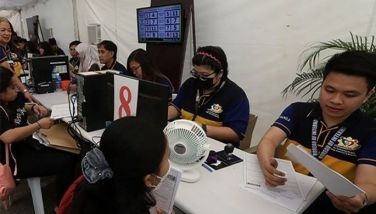What came first? Not the chicken and not the egg.

Another week, another problem? It certainly does seem that way these past several months. On the back of COVID-19 and learning to live amidst easing restrictions and going back to work and school, we’ve had to deal with many new issues. The war in Ukraine led to rising gas costs, which led to elevated inflation, supply chain disruption, and the overall increase in the prices of essential goods and services.
We aren’t out of the woods yet. We still have record-high gas prices to deal with, and it seems that the costs of everything are steadily increasing while salaries remain the same. It’s become increasingly challenging for Filipinos to live off what they earn, and many have to get creative about how they will make ends meet.
On top of that, we have a water shortage and a looming increase in energy prices. It looks like things will keep getting harder for everyone, and the new government will have its hands full trying to create solutions and programs to address all the issues.
Another rising concern for several Filipinos is what appears to be a shortage of chicken. While there still seems to be chicken available in the market, several reliable fast-food chains, and even restaurants have reported a lack of chicken for the past few weeks. Jollibee and McDonald’s are among them, and more and more outlets are having the same issue.
This is a cause of concern for many Filipinos because chicken is such a staple food and ordering chicken from fast-food restaurants is very common. To not have that option for several days is making many very angsty. Some fast-food chains said that the shortage was more of a technical issue than a supply one, but the fact remains that while some places still had chicken available, others didn’t. And, more often than not, those places that had it were charging substantially more.
It’s not the first time we have heard of a potential chicken shortage. There has been news of this for months, and it seems it may be happening. Currently, the Department of Agriculture (DA) has put measures in place to stabilize the rising cost of poultry brought about by higher demand for chicken and lower production.
Simultaneously, the Bureau of Animal Industry (BAI) shared that the DA has lined up several potential interventions, including working on boosting poultry production and stabilizing the supply and market price of poultry products. I guess we’ll see if these impact the availability and cost of chicken in the market in the coming weeks. Hopefully, because as it stands, we have a lot to deal with as it is.
* * *
Reports now expect a slower recovery pace for the country coming into the year’s second half as financial tightening is becoming a global phenomenon. While we had been slightly more optimistic earlier in the year due to a more robust first quarter, it looks like that optimism might have been premature.
At present, the financial tightening led by the US Federal Reserve will most likely cause an overall lower Asia GDP growth in the second half of this year. They specifically cited India, Thailand, Malaysia, and the Philippines experiencing financial tightening. Even after a stronger first quarter similar to pre-pandemic levels, we are now feeling the impact of inflation. The rising cost of goods and services impacts economic recovery as people’s consumption changes.
Hopefully, the government is prepared for the coming months. According to the bank, former president Rodrigo Duterte’s infrastructure program and the incoming administration’s economic program will be critical drivers for economic growth. The current inflation of food and transport is starting to exhibit the second-round impact affecting consumption, and we’ll see more of this in the months ahead.
The peso has also hit a new low against the dollar, which will significantly impact businesses. Worries continue to grow about how the next half of the year will look if we continue at this pace. Hoping for strong economic policies and plans to be implemented soonest to help curb this and find longer-lasting solutions going into the rest of the year and 2023.
For now, it looks like we will have to continue to brace ourselves for more of a recession in the months ahead. We still have a long way to go before we’re out of the woods, which means belt-tightening and creative spending. Hopefully, companies will also be more proactive about the current situation and look for viable solutions for employees.
This doesn’t necessarily mean wage increases if that’s just not possible at the moment, but measures like transportation or boarding arrangements when possible, office meals, or hybrid work solutions so that workers won’t have to spend so much on travel and logistics every day. Even two or three days a week without transportation expenses can make a difference.
We have to find ways to help each other during these challenging times. We have a long way to go, and we’ll only make it through if we work together.
- Latest
- Trending






























